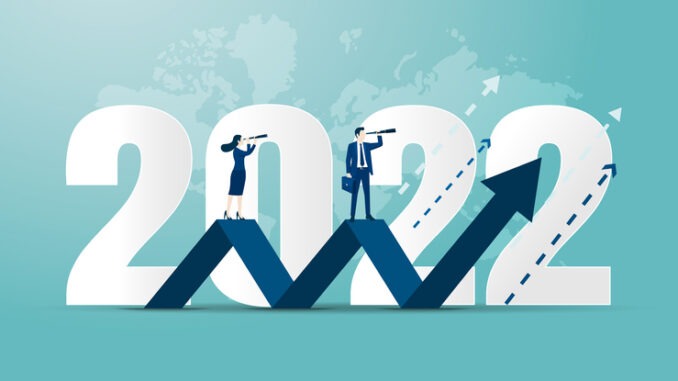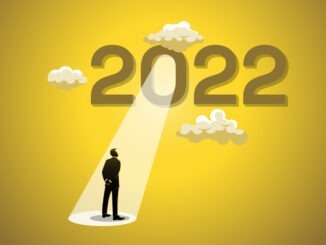
Marc Pinner, Europe lead, ITA Group, discusses what this year may bring and how you can get the most out of 2022
Employee
Employee engagement – the qualitative comeback
Employee engagement has long been a negative pre-occupation of HR managers and their bosses. 2022 is going to usher in the ‘qualitative comeback’. Organisations carry significantly more data on their employees today than they did pre-COVID, but the growth of this data is largely quantitative in nature – in many ways it had to be, as employees were scarcely in the office to offer qualitative sentiment. Despite having all this data, organisations are still struggling to accurately predict the key drivers of an employee’s decision to leave their organisations and, in the UK, we have added Brexit to the phenomenon of ‘the great resignation’.
For any business, nothing can be more authentic than the direct voice of the employee, and few things create community like shared experiences. The qualitative comeback offers organisations the opportunity to ask employees hard and purposefully pointed questions. In so doing, it’s possible to leverage that personal feedback to create communities of engagement around shared experiences between employees who may be in the next office, or halfway around the world.
Leverage human capital for ESG goals
Employees fled their jobs and companies at record rates in 2021. Recent surveys found that 40% of workers globally are considering leaving their current employers. Employees demand more today of employers than ever—and social and ethical consciousness are two areas of prime opportunity for employers to meet the demands of an increasingly exacting workforce. As a result, organisations will put environmental, social and governance (ESG) principles at the centre of their human capital management strategies in 2022. Approximately 58% of employees consider a company’s social and environmental commitments when deciding where to work, and employees are three times more likely to stay, and 1.4 times more engaged, when working at what they consider to be purpose-driven organisations. These stats reinforce why companies will lean in to ESG, build it into their employer value proposition, and reinforce behaviours connected to ESG principles as a means to attract and retain talent!
Offer recognition that emotionally connects to leave a lasting memory
As we all continue adapting to a ‘work-from-anywhere’ environment, and retention is top of the minds of both employees and organisations, the need to foster a sense of connection among co-workers, as well as within organisations, will also evolve. I think you’ll see more emphasis on maximising recognition and finding creative ways to celebrate achievements outside of emails and ecards that offer more of an experience. The focus will turn to public and personal moments to which entire teams can contribute, whether they are interacting in person or through technology. The most successful and memorable recognitions will, ultimately, be those experiences that align with an individual’s sense of purpose – but are also authentic and personalised. Creating these effective experiences is a learned behaviour and it’s a skill that will need to be developed across entire workforces and particularly among leaders.
While predictions are fun, listening to feedback directly from the workforce should be an integral part of your own strategy for engaging your people in 2022.
Channel
Leaders need to ensure their programme strategy, incentives, processes, engagement efforts and systems are evolving to meet the demands of indirect partner organisations. In turn, programme updates should also help vendors and brands create an improved customer experience.
Deliver excellent customer experiences
Channel marketers are experimenting with, and reinventing, several of the core components of the partner experience in order to build a stronger, more engaged community of partners. For channel partners to deliver excellent customer experiences, they need to be just as familiar with your brand’s product/service as they are with their own business’ unique selling proposition. To ensure your products are top of mind, and being properly promoted, identify which partners are engaged and which are not. You can then employ additional tactics to improve engagement and loyalty; provide them with key benefits, specialisation, certification, etc, to help drive performance. Also be sure to offer relevant and timely communications that are specific to the actions you want those partners to take, and recognise/reward that behaviour when they do.
Shift from selling to serving
As customers research solutions for themselves – rather than trust the word of the salesperson throughout the buying process – that person’s role has shifted from the representation of features and functions to offering more assurance that the right team is brought into the conversation. This is especially true as companies become more solution and service-oriented, meaning other, specific, areas of expertise have to be brought into the sales process, such as marketing. The salesperson isn’t alone in the selling process, and can no longer be the only role recognised and rewarded for a sale. Equally, as the traditional role of the salesperson through the lifecycle of the customer relationship has changed, new roles such as customer success managers, who are servicing clients along the way, are needed to focus on the renewal, consumption and upselling of accounts.
Focus on influencer and referral programmes
Utilising referral partners is a great way to grow your sales efforts because referral partners have already gained the trust of the customer and the probability of conversion is a lot higher. It’s important to look at your channel partners as companies you want to share success with, not organisations to exploit for your own benefit. The relationship should be mutual, and there should be responsibilities and objectives to be met by both parties.
Be prepared for disruption in any form
The current state of our lives, businesses and industries is a bit like an Etch-a-Sketch in that every time a clear picture starts to emerge, something shakes it up and leaves a blank slate. While 2022 is anything but certain, consider how you will respond to an assortment of disruptions such as inflation, increased customer distractions, uncertain demand, supply chain disruptions, drained workforces and the skills gap.
Taking stock early will transform performance, create meaningful change and steer back growth.
www.itagroup.com



Be the first to comment